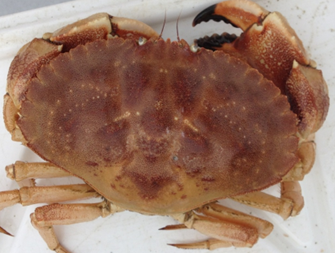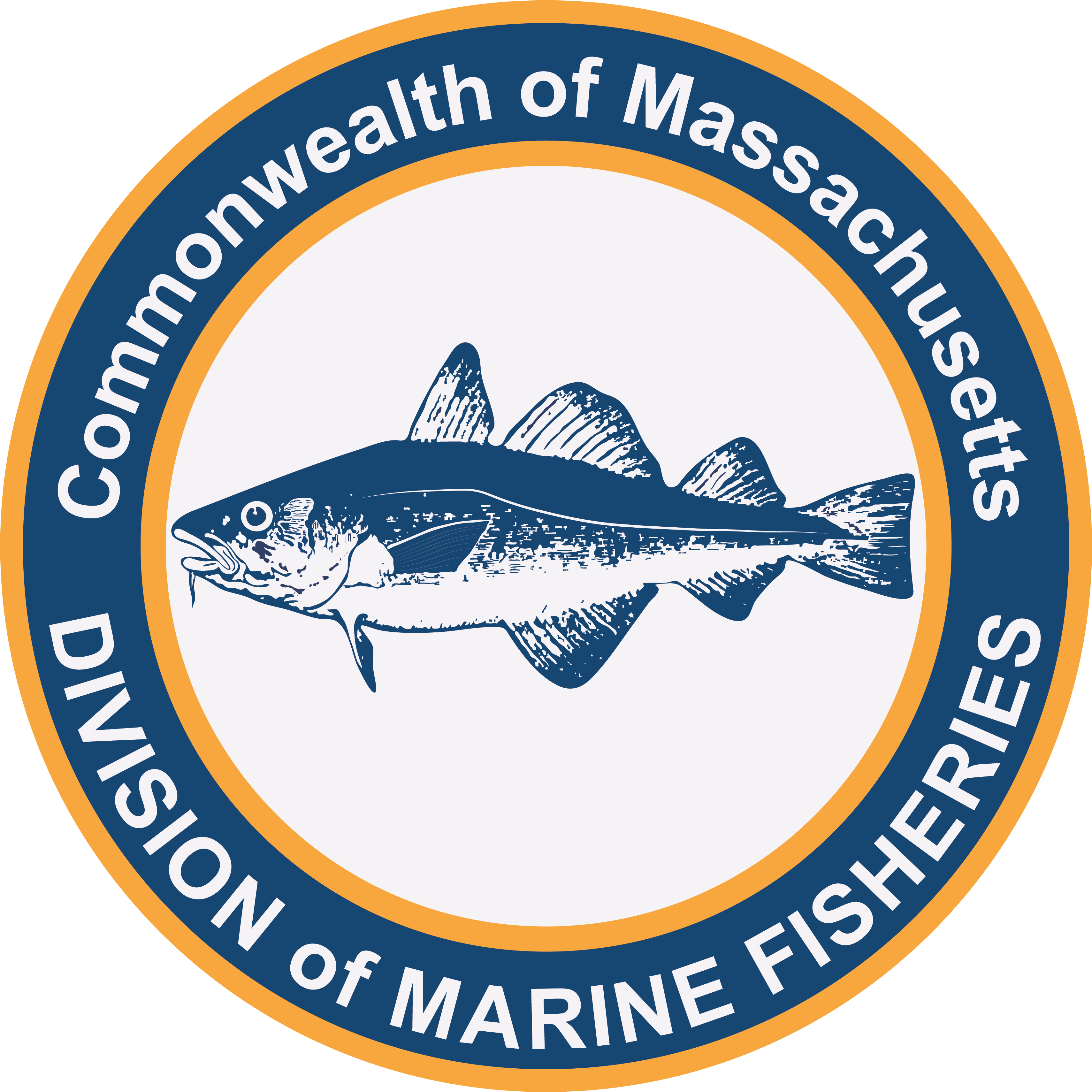- Division of Marine Fisheries

Jonah crab (Cancer borealis) and rock crab (Cancer irroratus) are commonly found in Massachusetts waters and are sometimes collectively referred to as “Cancer crabs.” Though similar in appearance, these closely related crabs can be distinguished by the roughness of the edge of their shell. The leading edge (margin) of the Jonah crab shell is consistently rough (see above photo), or jagged, whereas the edge of a rock crab’s shell is smooth between the major indentations (see figure below). Shell color for both species is usually brown but can have red or purple hues.
Jonah crabs can grow larger than rock crabs; Jonah crabs have been recorded as large as 8.75 inches wide, whereas rock crabs don’t exceed 5.5 inches. Males of both species attain larger sizes than females of the same species. Male Jonah crabs also tend to have much larger claws than male rock crabs. Jonah crabs are relatively slow moving and tend to avoid threats by burying themselves and hiding or relying on their bulk to deter predators. Rock crabs are much faster and are more likely to flee, or to raise their claws to fight.
Rock crabs are known by other common names which vary regionally, or for marketing purposes. They are commonly referred to as “peekytoe” crabs in some parts of Maine and marketed to high end restaurants under this name. They are referred to as “sand crabs” by many fishermen in Massachusetts, and in the mid-Atlantic they are often called “white-leggers.” Some people also refer to Jonah crab as “rock crab”, which can complicate fishery landings reports.
Nearly all Jonah crabs landed by the commercial fishery in Massachusetts are male and caught in traps in federal waters. There is a 4.75” carapace width minimum legal size for Jonah crabs. Because female Jonah crabs are smaller, they are less likely to reach the minimum legal size and more likely to be able to escape through legally mandated trap escape vents. There is no minimum legal size for rock crab. With a recreational lobster/edible crab fishing permit, Massachusetts recreational fishers are allowed to keep 50 Cancer crabs (species combined) daily, either by trap or SCUBA diving. For more information on recreational fishing for Cancer crabs, please visit our recreational fishing guide here.
While rock crabs occasionally have been featured at high end restaurants, Jonah crabs currently support the larger fishery. In 2022, nearly 8 million pounds of Jonah crab, worth over $14 million, were landed in Massachusetts, making it the fifth most valuable fishery in the state. The rock crab fishery is much smaller. Just over 100,000 pounds of rock crab were landed in Massachusetts in 2022, with a value of less than $200,000. Both species are marketed live, or as fresh or frozen picked meat. Large Jonah crab claws, or “cocktail claws”, make a great appetizer. They can be found at seafood markets fresh or frozen, and pre-scored for easy cracking. In the mid-Atlantic, rock crabs are also sold as bait to catch tautog.
If you haven’t tried them yet, pick up some Jonah crab cocktail claws for your next social gathering!
By Derek Perry
